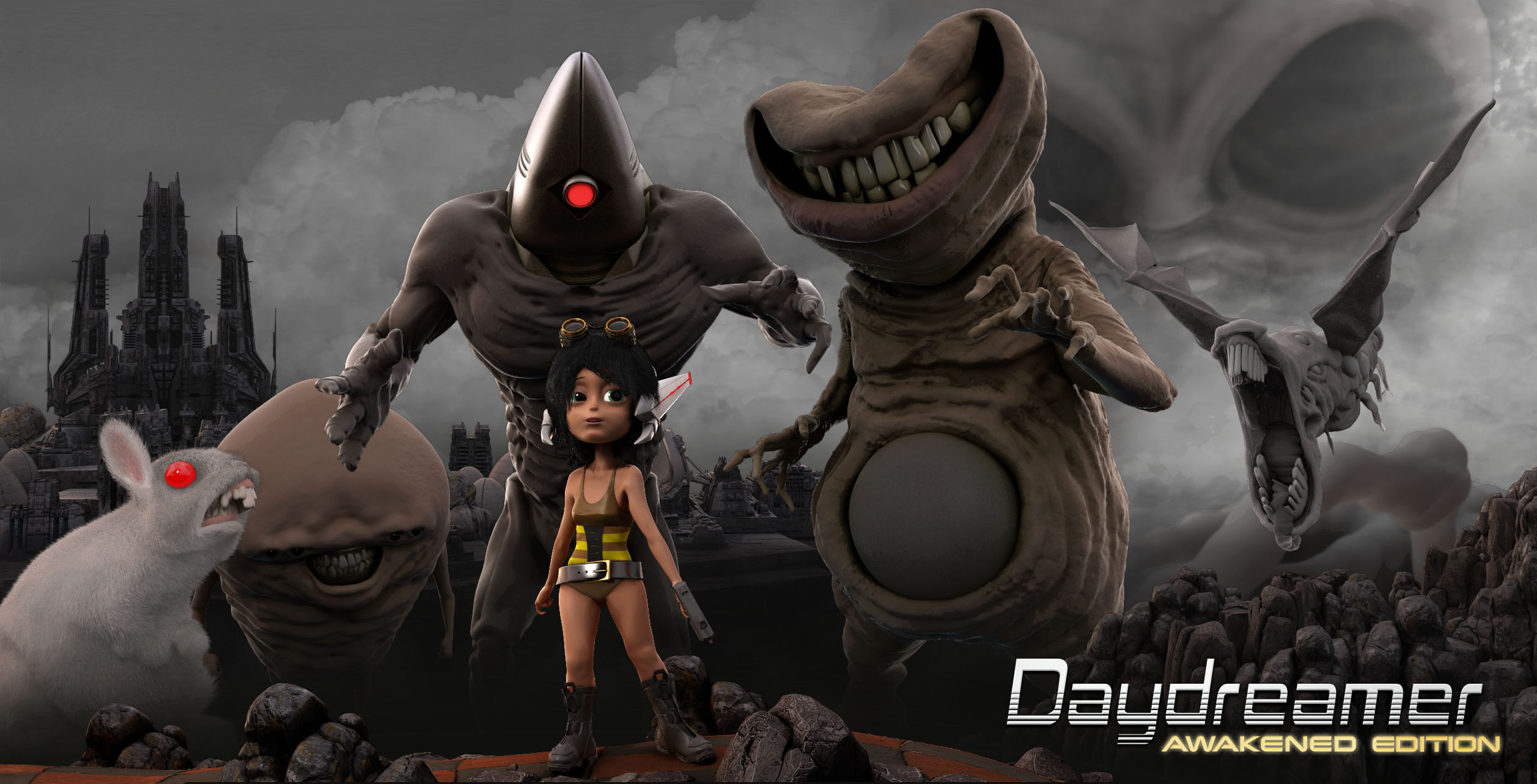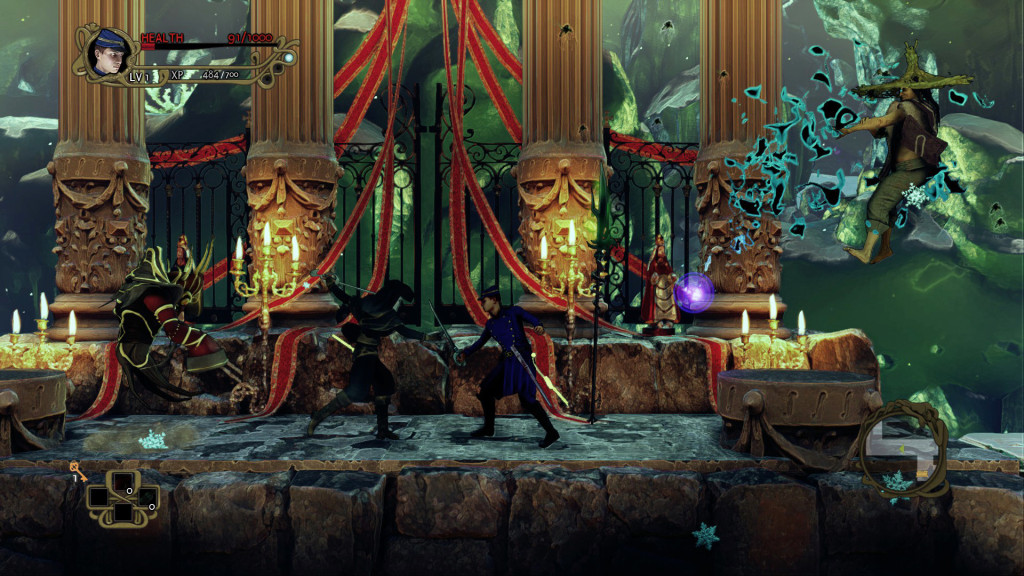Developer/Publisher: Desert Owl Games, LLC. || Overall: 6.0
There are things in life that just seem inevitable. First and foremost are death and taxes, but, besides that classic example, the list doesn’t end there. A clear runner up would be emotions like happiness, sadness and anger, which are things that nothing short of a specific lobotomy or mental condition could prevent. Then we have other people, which are impossible to avoid because, according to how I know babies are made, we all start out coming out of a person. There is also disappointment that often comes when the starry-eyed optimism of youth gets a dose of the cold hard reality of adult life. Just like your very next breath, there are just some things that cannot be avoided… like movie tie-in games…

In the long tradition of movie tie-ins, Huntsman: Winter’s Curse sets its sights on your PS4’s storage data. Taking place in the Huntsman universe and serving as a sort of side-story to the events in the film, Huntsman: Winter’s Curse describes itself as a “adventure RPG with collectible card game elements” and for the most part gets that right. Though whether it can avoid the curse of a terrible movie tie-in game is another thing entirely.
Huntsman: Winter’s Curse quickly establishes a rhythm and then staunchly refuses to change it. Every bit of story is followed by an encounter, every encounter is then followed by a change of location, and every change of location then brings about more story. Along the way, a boss fight occurs and eventually after a few repeats of the established sequence, the game will end. While this may seem like the standard structure of most RPGs, it’s not so much that it uses a fairly common structure, it’s how Huntsman: Winter’s Curse handles it. The whole process is far too structured and leaves very little room for player agency. Every location has a set number of encounters and doesn’t allow for any exploration on the player’s part. Visiting a different location only requires scrolling over the desired location and then pressing “X” to go there. There is no actual walking or exploring to speak of. To add to that, all loot is tied to those encounters and there is no real way to get more. There are a few side quests, but even those are structured in the same way, where the encounters and loot are predetermined. If there is any attempt at giving the player agency, it can be seen in the choices the player is allowed to make throughout the story, but even those seem inconsequential in the long run. More often than not, the story ends up taking the same route regardless.

As far as the story goes, Huntsman: Winter’s Curse is a fun little side-adventure that isn’t too bogged down by the details of the movie. This makes it something that a person who has never seen the movie has a possibility of enjoying the story. Mentions and some cameos do exist, including a battle with the title character himself in all of his Chris-Hemsworth-Playing-Not-Thor glory (Inevitable!), but this story exists as a standalone within the universe.
The story is a familiar tale that pits our plucky and strong female protagonist and her roguish male companion on a quest through the Huntsman universe in search of her brothers. Of course, things are never that simple and she quickly finds herself on the opposing end of a powerful witch. This same fairy tale esthetic also bleeds into the presentation. The characters are drawn much like they were in some elaborate picture book and each part of the story is separated into a “book” that denotes each story arc. The characters speak in a fancy tone that can feel like they are hamming it up at times, but overall fit their character and circumstances. There are also enough twists and turns to keep the player interested, as long as they are able to get past the feeling of being led along by the wrist at every turn.
Another positive point is the combat. The system closely resembles the Active Time Battle system used in some Final Fantasy games but with the added benefit of having actions that can alter a character’s turn. Turn order is displayed above the action with a line that scrolls forward with the combatants represented by a portrait on it. Once the portrait reaches the end, that character is allowed to act. Where it gets interesting is in the cards that let you push back your opponents turn. Some allowing you to push a certain character’s action several turns back to either land a few hits or set up another combo with your cards.

Though, no matter how much fun I found the combat, it did nothing to make parts of the game feel any less half-baked. There are a number of bugs that I encountered, ranging from the annoyingly constant button lag to a frustrating glitch that didn’t allow me to change the equipment on my second character unless I exited the game. There is also a lack in variety among the cards available. I found myself with the exact same card across multiple equipment more often than you would think. Lastly, I just couldn’t shake the feeling that I was playing a glorified mobile game. Everything from the combat to the way you change locations and even the presentation screamed that this was originally intended for the mobile market instead of being a full-fledged console release.
All in all, Huntsman: Winter’s Curse is a noble attempt at a movie tie-in game that fails to impress. The combat and story is intriguing but the way the game handholds the player through the story can be annoying. And that still fails to address that the ample number of bugs in the game are grating, and the lack of variety when it comes to the cards can be no less a detriment to the experience. If you are interested in a game set in a Huntsman universe and don’t mind a bit of linearity, give it a try. On the other hand, if you are looking for an open experience with more variety, I’d recommend something else.
























































